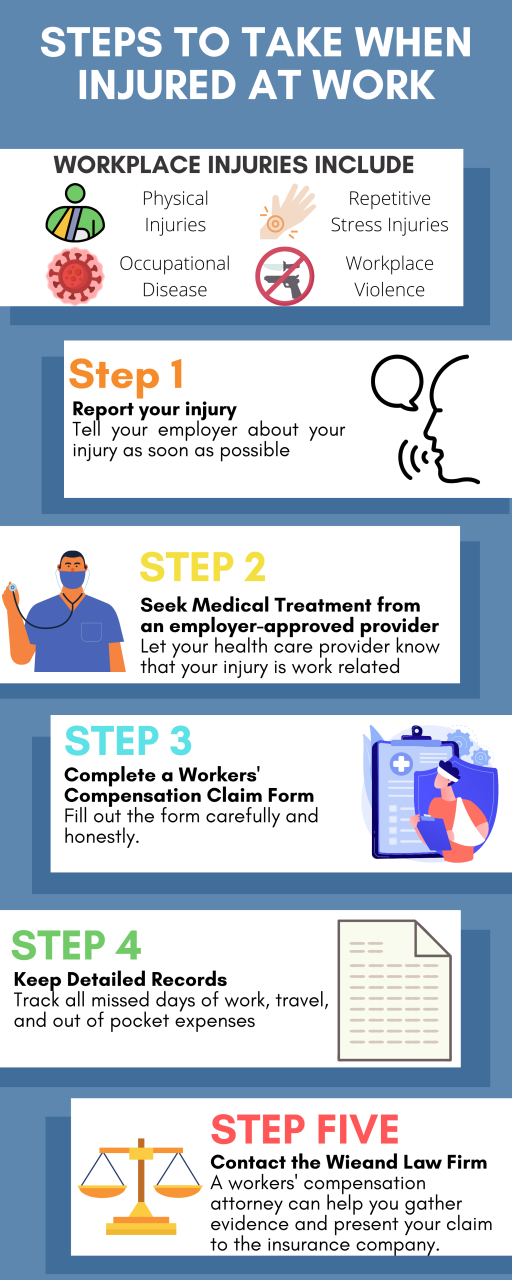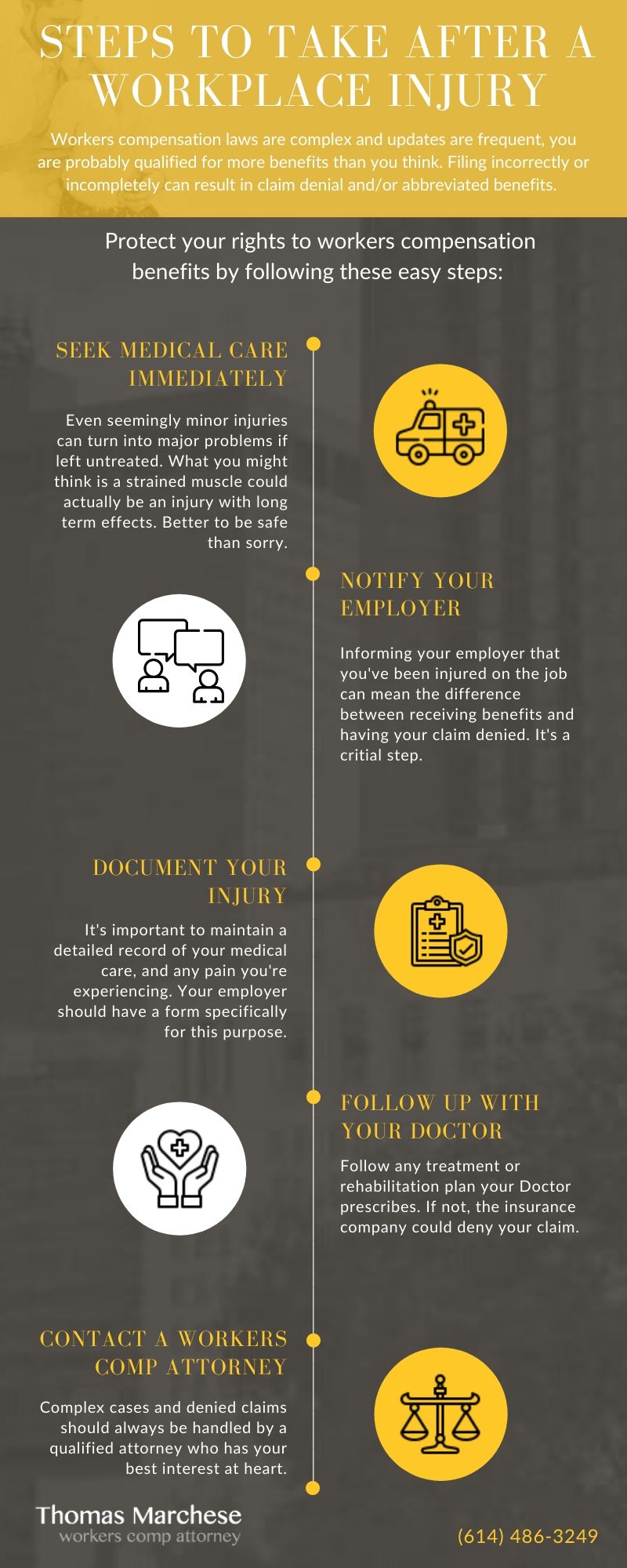Legal Steps To Take After A Workplace Accident: A Lawyer’s Perspective

Legal Steps to Take After a Workplace Accident: A Lawyer’s Perspective
Related Articles: Legal Steps to Take After a Workplace Accident: A Lawyer’s Perspective
- Common Challenges In Accident Cases And How Lawyers Solve Them
- Top Legal Strategies Used By Experienced Accident Lawyers
- Understanding No-Fault Insurance And How Lawyers Can Help In Accidents
- What Questions To Ask During Your Initial Consultation With An Accident Lawyer
- How Accident Lawyers Simplify The Legal Process
Introduction
Welcome to a journey into the world of Legal Steps to Take After a Workplace Accident: A Lawyer’s Perspective. Through this article, we aim to engage, inform, and inspire you with comprehensive information and practical perspectives.
Video about Legal Steps to Take After a Workplace Accident: A Lawyer’s Perspective
Legal Steps to Take After a Workplace Accident: A Lawyer’s Perspective

Workplace accidents can range from minor injuries to catastrophic events resulting in severe physical harm, emotional trauma, and significant financial losses. Navigating the legal complexities following such an incident can be daunting, even more so when dealing with the immediate aftermath of pain, injury, and potential long-term consequences. This article provides a detailed overview of the legal steps to take after a workplace accident, offering a lawyer’s perspective on protecting your rights and securing the compensation you deserve.
1. Immediate Actions Following a Workplace Accident:
The immediate response to a workplace accident is crucial in establishing a strong legal foundation. Your first priority should always be your safety and well-being. If you’re injured, seek immediate medical attention. Even seemingly minor injuries should be documented by a medical professional. Do not attempt to minimize or downplay your injuries. A comprehensive medical record is vital for future legal claims.
Simultaneously, report the accident to your supervisor or designated authority immediately. This is a critical step in complying with workplace safety regulations and initiating the employer’s internal accident reporting process. Obtain a copy of the accident report and any related documentation. If possible, take photographs or videos of the accident scene, documenting any visible hazards or contributing factors. Note the names and contact information of any witnesses. Refrain from admitting fault or speculating about the cause of the accident.
2. Preserving Evidence:
Evidence preservation is paramount in workplace accident cases. Your actions in the immediate aftermath significantly influence the strength of your potential claim. Beyond the initial documentation, consider the following:
- Medical Records: Gather all medical records, including doctor’s notes, test results, and treatment plans. These documents serve as irrefutable evidence of your injuries and their extent. Ensure you maintain consistent medical care and follow your doctor’s recommendations.
- Witness Statements: Obtain written statements from anyone who witnessed the accident. These statements should detail the events leading up to, during, and immediately following the accident. Accuracy and detail are vital.
- Photographs and Videos: Continue documenting the scene, your injuries, and any relevant evidence. Time-stamped photographs and videos can provide compelling visual evidence.
- Work Records: Gather your employment records, including your job description, safety training records, and any prior reports of similar incidents. These documents can help establish your work duties and the employer’s knowledge of potential hazards.

3. Understanding Workers’ Compensation:
In most jurisdictions, workers’ compensation insurance provides a no-fault system for compensating employees injured on the job. This means you can receive benefits regardless of who was at fault for the accident. However, the process can be complex, and navigating it without legal guidance can be challenging. Workers’ compensation benefits typically cover medical expenses, lost wages, and potentially permanent disability benefits. Filing a workers’ compensation claim is usually a necessary first step, even if you intend to pursue a separate lawsuit against a third party.
4. Investigating the Cause of the Accident:
A thorough investigation into the cause of the accident is essential for determining liability. This investigation may involve reviewing safety procedures, equipment maintenance records, and witness testimonies. An experienced attorney can conduct a comprehensive investigation, utilizing expert witnesses such as safety engineers or accident reconstruction specialists, if necessary. This investigation will help establish the facts supporting your claim and identify potential liable parties.
5. Determining Liability:
Establishing liability is a crucial aspect of pursuing a successful claim. Liability refers to determining who is legally responsible for the accident and the resulting injuries. In some cases, liability may fall solely on the employer due to negligence in providing a safe working environment. Other instances may involve third-party liability, such as a negligent manufacturer of defective equipment. A lawyer can analyze the circumstances of the accident, identify all potential liable parties, and build a strong case to pursue compensation from them.
6. Negotiating with the Insurance Company:
After filing a workers’ compensation claim or initiating a lawsuit, you’ll likely interact with insurance adjusters. These adjusters represent the interests of the insurance company and may attempt to minimize your settlement. It’s crucial to have legal representation to navigate these negotiations effectively. An attorney can protect your rights, negotiate a fair settlement, and ensure you receive the full compensation you deserve. Never accept a settlement offer without consulting with a lawyer first.
7. Filing a Lawsuit (If Necessary):
If negotiations with the insurance company fail to reach a satisfactory settlement, filing a lawsuit may be necessary. This involves formally initiating a legal action against the liable party or parties. A lawsuit requires meticulous preparation, including gathering evidence, drafting legal documents, and presenting your case to the court. An experienced attorney can guide you through this process, representing your interests in court and advocating for your rights.
8. Dealing with Long-Term Disability and Medical Expenses:
Workplace accidents can result in long-term disability and significant medical expenses. These costs can be overwhelming, impacting your ability to support yourself and your family. A lawyer can help you navigate the complexities of long-term disability claims and ensure you receive the necessary medical care and financial support. They can also negotiate with insurance companies to cover ongoing medical expenses and lost income.

9. Protecting Your Rights and Avoiding Common Mistakes:
Protecting your rights after a workplace accident requires proactive and informed action. Common mistakes to avoid include:
- Failing to report the accident promptly: Delayed reporting can weaken your claim.
- Minimizing your injuries: Accurate documentation of injuries is crucial.
- Speaking to insurance adjusters without legal representation: Insurance adjusters may try to obtain statements that could harm your case.
- Accepting a settlement offer too quickly: Ensure you understand the full extent of your injuries and potential future needs before accepting any settlement.
Frequently Asked Questions (FAQ):
Q: Do I need a lawyer after a workplace accident?
A: While not always mandatory, legal representation is highly recommended. A lawyer can provide expert guidance, protect your rights, and help you obtain the compensation you deserve.
Q: How much does it cost to hire a lawyer for a workplace accident case?
A: Many personal injury lawyers work on a contingency fee basis, meaning they only get paid if they win your case. The fee is typically a percentage of the settlement or judgment.
Q: How long does a workplace accident case take?
A: The duration varies widely depending on the complexity of the case, the extent of injuries, and the insurance company’s response. Cases can range from a few months to several years.
Q: What if my employer retaliates against me for reporting the accident?
A: Retaliation is illegal in most jurisdictions. Your lawyer can help you address any retaliatory actions by your employer.
Q: What if I’m partially at fault for the accident?
A: In many jurisdictions, comparative negligence laws may reduce your compensation based on your degree of fault. A lawyer can help you navigate these complexities.
Q: What type of lawyer should I hire?
A: You should hire a personal injury lawyer specializing in workplace accidents or workers’ compensation claims.
Q: What if I don’t have health insurance?
A: Workers’ compensation typically covers medical expenses regardless of your health insurance status. Your lawyer can help you access these benefits.
Q: Can I sue my employer directly?
A: In many cases, you’ll first pursue workers’ compensation benefits. However, you may be able to sue your employer in certain situations, such as if the employer intentionally caused the accident or if a third party was also responsible. A lawyer can help determine the best course of action.
This article provides general information and should not be considered legal advice. It’s crucial to consult with a qualified personal injury attorney in your jurisdiction to discuss the specifics of your case and determine the best course of action.
Closure
We hope this article has enriched your understanding of Legal Steps to Take After a Workplace Accident: A Lawyer’s Perspective. We look forward to bringing you more engaging content in the future. See you in our upcoming discussions!



